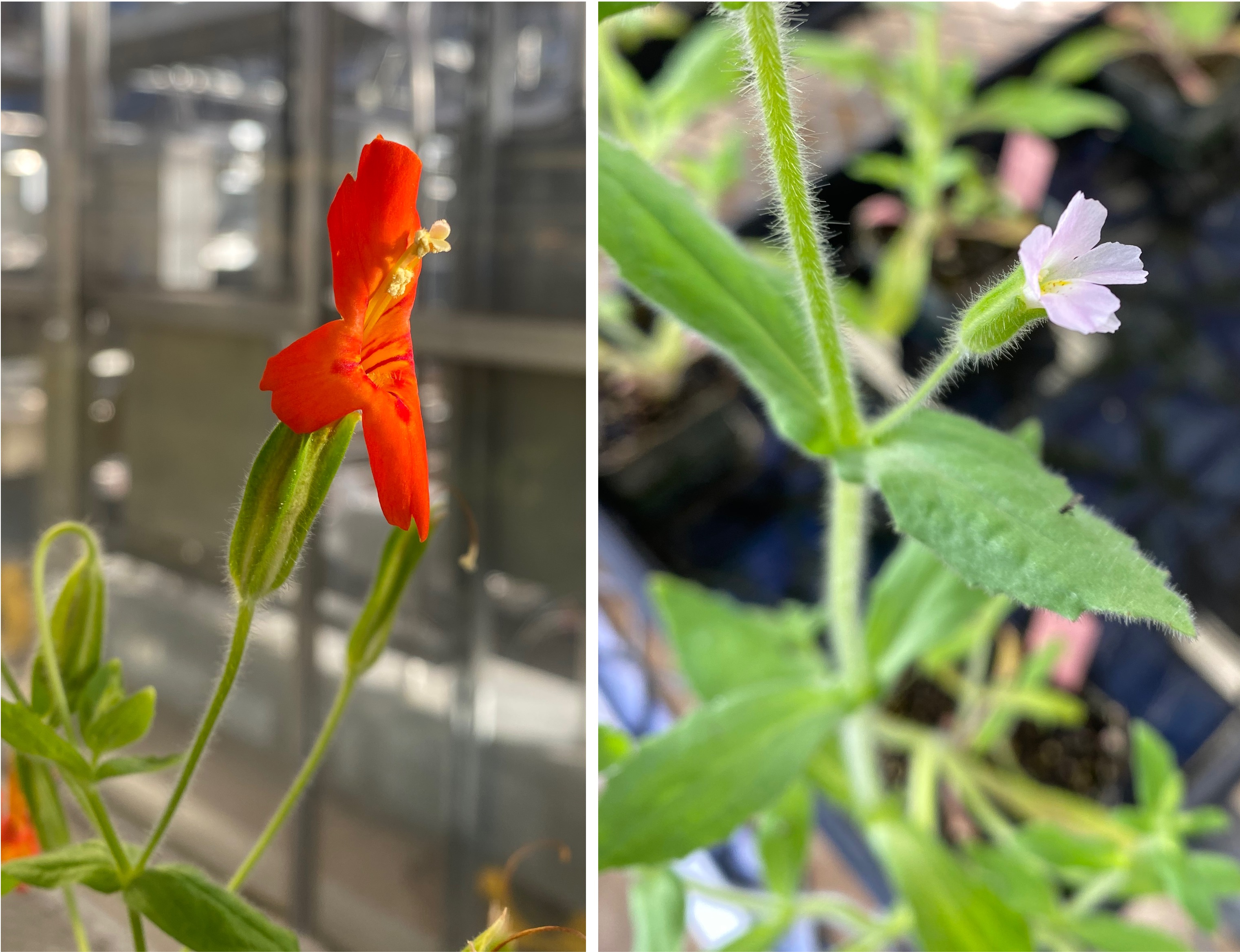Research | Evolutionary Genetics Lab at SUNY Oneonta
What are the environmental, ecological, or genetic mechanisms that shape genetic structure of closely-related species?
Which pre- and/or post-mating barriers influence reproductive isolation across diverse taxa?
How do these barriers interact and which are most influential in the process of speciation?
How do these barriers affect the conservation of taxa of interest?
Me and my colleagues address these very broad questions using a combination of approaches from population and quantitative genetics,
ecology, and bioinformatics.
Population genomics of Myriophyllum (Watermilfoils)
This is a newly funded project from the Lake Champlain Basin Program to myself and Dr. Dan Stich (website)
at SUNY Oneonta starting early 2024! We plan to assess population genomics, specifically hybridization,
between members of the watermilfoil genus with emphasis on the invasive Eurasian watermilfoil (Myriophyllum spicatum) within the Lake Champlain Basin
in New York and Vermont. Further, we will determine if and how the genetic ancestry of watermilfoil population(s) in a lake impact native plant
communities to aid in management and conservation practices.
Genetic incompatibilities in Mimulus
 Using F2 and recombinant inbred lines between closely related Mimulus species – M. cardinalis and M. parishii –
that differ dramatically in flower morphology due to differences in mating system (outcrossing versus self-fertilizing)
are extremely useful to assess genetic incompatibilities. With these lines we are investigating the genetic basis of post-mating
reproductive isolation by assessing patterns of segregation distortion and inter-chromosomal linkage disequilibrium.
This will facilitate our understanding of the molecular and biological mechanisms that promote reproductive isolation between
closely related species that have evolved drastically different life-history strategies.
Using F2 and recombinant inbred lines between closely related Mimulus species – M. cardinalis and M. parishii –
that differ dramatically in flower morphology due to differences in mating system (outcrossing versus self-fertilizing)
are extremely useful to assess genetic incompatibilities. With these lines we are investigating the genetic basis of post-mating
reproductive isolation by assessing patterns of segregation distortion and inter-chromosomal linkage disequilibrium.
This will facilitate our understanding of the molecular and biological mechanisms that promote reproductive isolation between
closely related species that have evolved drastically different life-history strategies.
Population genomics of sympatric Mimulus
 Large-scale population genetics study of two closely related Mimulus - M. guttatus and M. nasutus -
to assess hybridization, introgression, genetic structure, and environmental selection pressures in and around Don Pedro Reservoir in California.
These two species are classic model organisms used to study quantiative and evolutionary genetics in a controlled (greenhouse) setting. The work I
am involved with is geared to undetstand how findings in a controlled setting (e.g. genetic incompatibilities) influence reproductive isolation
between these two species in nature. Specifically, we are interested in quantifying the genetic structure and introgression dynamics with respect to
the multitude of known pre- and post-mating barriers between these two closely related species.
Large-scale population genetics study of two closely related Mimulus - M. guttatus and M. nasutus -
to assess hybridization, introgression, genetic structure, and environmental selection pressures in and around Don Pedro Reservoir in California.
These two species are classic model organisms used to study quantiative and evolutionary genetics in a controlled (greenhouse) setting. The work I
am involved with is geared to undetstand how findings in a controlled setting (e.g. genetic incompatibilities) influence reproductive isolation
between these two species in nature. Specifically, we are interested in quantifying the genetic structure and introgression dynamics with respect to
the multitude of known pre- and post-mating barriers between these two closely related species.
Hybridization dynamics and phylogeography of riverine minnows
 Using population genetics, ecological data, and approximate Bayesian computation (ABC) I am working to understand how and why
riverine minnows are genetically structured the way they are. One part of this study was to assess introgression and hybridization between
two closely related minnows, Macrhybopsis australis and M. hyostoma, in the Red River of Texas. Currently, I am working
to understand what genetic, ecological, and/or environmental mechanisms influence the evolutionary history of riverine minnows in Gulf Slope
drainages of Texas using three groups of minnows, Macrhybopsis spp., Notropis spp., and Dionda spp..
Using population genetics, ecological data, and approximate Bayesian computation (ABC) I am working to understand how and why
riverine minnows are genetically structured the way they are. One part of this study was to assess introgression and hybridization between
two closely related minnows, Macrhybopsis australis and M. hyostoma, in the Red River of Texas. Currently, I am working
to understand what genetic, ecological, and/or environmental mechanisms influence the evolutionary history of riverine minnows in Gulf Slope
drainages of Texas using three groups of minnows, Macrhybopsis spp., Notropis spp., and Dionda spp..
Robust design mark-recapture of freshwater mussels
 Colleagues and I developed and implemented a robust design Bayesian mark-recapture model for use on virtually any taxa.
Our model was successful in estimating detection probability, abundance, survival, and site fidelity of several mussel species in Texas and how
floods influence these imoportant population demographics.
These species included those of conservation concern.
Colleagues and I developed and implemented a robust design Bayesian mark-recapture model for use on virtually any taxa.
Our model was successful in estimating detection probability, abundance, survival, and site fidelity of several mussel species in Texas and how
floods influence these imoportant population demographics.
These species included those of conservation concern.